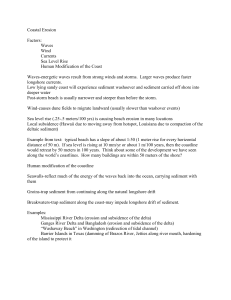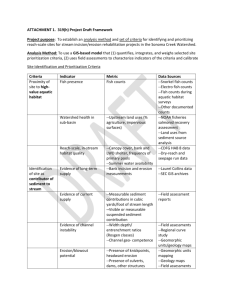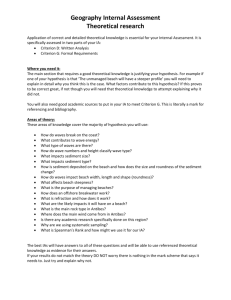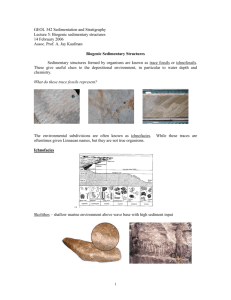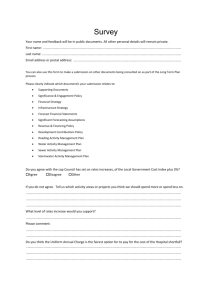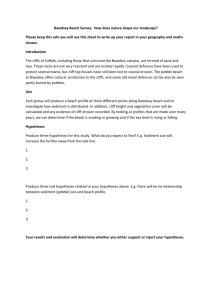Lessons 16-19 Review
advertisement
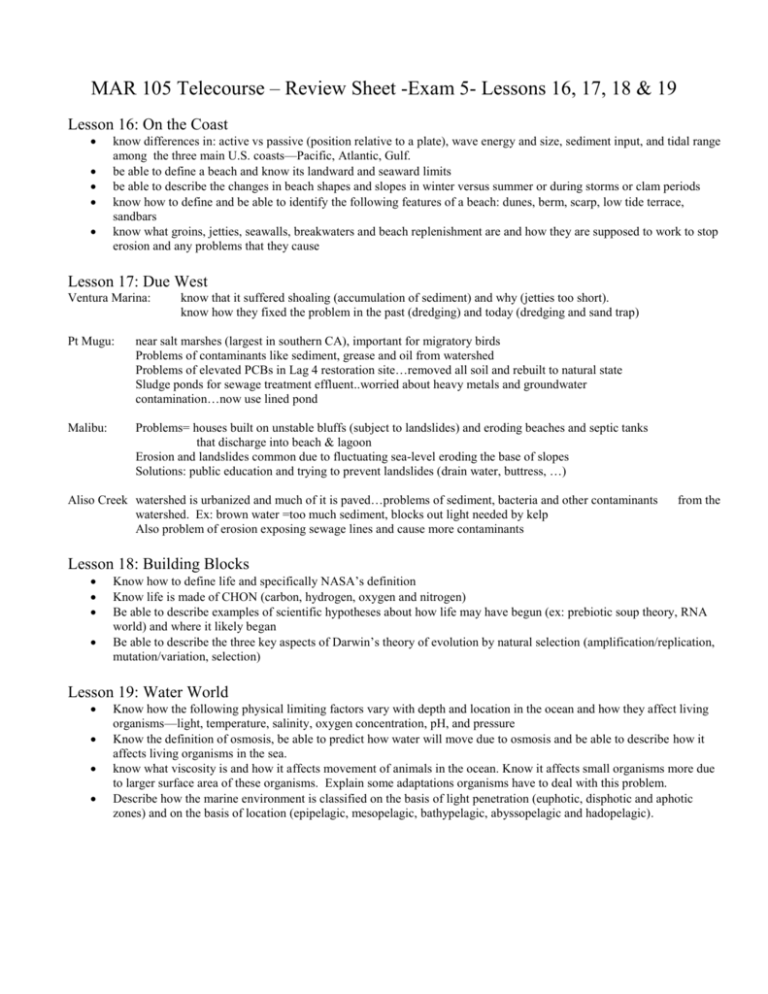
MAR 105 Telecourse – Review Sheet -Exam 5- Lessons 16, 17, 18 & 19 Lesson 16: On the Coast know differences in: active vs passive (position relative to a plate), wave energy and size, sediment input, and tidal range among the three main U.S. coasts—Pacific, Atlantic, Gulf. be able to define a beach and know its landward and seaward limits be able to describe the changes in beach shapes and slopes in winter versus summer or during storms or clam periods know how to define and be able to identify the following features of a beach: dunes, berm, scarp, low tide terrace, sandbars know what groins, jetties, seawalls, breakwaters and beach replenishment are and how they are supposed to work to stop erosion and any problems that they cause Lesson 17: Due West Ventura Marina: know that it suffered shoaling (accumulation of sediment) and why (jetties too short). know how they fixed the problem in the past (dredging) and today (dredging and sand trap) Pt Mugu: near salt marshes (largest in southern CA), important for migratory birds Problems of contaminants like sediment, grease and oil from watershed Problems of elevated PCBs in Lag 4 restoration site…removed all soil and rebuilt to natural state Sludge ponds for sewage treatment effluent..worried about heavy metals and groundwater contamination…now use lined pond Malibu: Problems= houses built on unstable bluffs (subject to landslides) and eroding beaches and septic tanks that discharge into beach & lagoon Erosion and landslides common due to fluctuating sea-level eroding the base of slopes Solutions: public education and trying to prevent landslides (drain water, buttress, …) Aliso Creek watershed is urbanized and much of it is paved…problems of sediment, bacteria and other contaminants watershed. Ex: brown water =too much sediment, blocks out light needed by kelp Also problem of erosion exposing sewage lines and cause more contaminants from the Lesson 18: Building Blocks Know how to define life and specifically NASA’s definition Know life is made of CHON (carbon, hydrogen, oxygen and nitrogen) Be able to describe examples of scientific hypotheses about how life may have begun (ex: prebiotic soup theory, RNA world) and where it likely began Be able to describe the three key aspects of Darwin’s theory of evolution by natural selection (amplification/replication, mutation/variation, selection) Lesson 19: Water World Know how the following physical limiting factors vary with depth and location in the ocean and how they affect living organisms—light, temperature, salinity, oxygen concentration, pH, and pressure Know the definition of osmosis, be able to predict how water will move due to osmosis and be able to describe how it affects living organisms in the sea. know what viscosity is and how it affects movement of animals in the ocean. Know it affects small organisms more due to larger surface area of these organisms. Explain some adaptations organisms have to deal with this problem. Describe how the marine environment is classified on the basis of light penetration (euphotic, disphotic and aphotic zones) and on the basis of location (epipelagic, mesopelagic, bathypelagic, abyssopelagic and hadopelagic).

